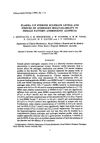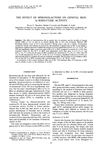TLDR Women with non-classical congenital adrenal hyperplasia have higher levels of certain steroids, which can be reduced by treatment.
The study measured plasma levels of 3α-diolG, ADTG, and DHTG in 15 symptomatic and 3 asymptomatic women with non-classical congenital adrenal hyperplasia (NC-CAH), 5 heterozygote carriers, and 18 normal women. Baseline levels of these glucuronides were significantly higher in symptomatic patients. Chronic glucocorticoid therapy led to an 80% suppression of these glucuronides, indicating its effectiveness. The study concluded that plasma levels of these glucuronides are not related to hirsutism or body weight but reflect adrenal contribution to circulating androgens. The heterozygosity of NC-CAH did not show an intermediate steroid profile, and the glucuronides likely originate from adrenal precursors in non-obese women.
 32 citations
,
January 1990 in “Clinical Endocrinology”
32 citations
,
January 1990 in “Clinical Endocrinology” Women with female pattern hair loss have higher levels of certain androgens, suggesting increased androgen exposure to hair follicles.
 50 citations
,
August 1985 in “Journal of steroid biochemistry/Journal of Steroid Biochemistry”
50 citations
,
August 1985 in “Journal of steroid biochemistry/Journal of Steroid Biochemistry” Spironolactone reduces the enzyme activity that converts testosterone to DHT, helping treat excessive hair growth in women.
142 citations
,
February 1985 in “Fertility and sterility” Spironolactone reduced hair thickness and some testosterone levels in women with excessive hair growth.
179 citations
,
May 1982 in “The Journal of clinical investigation/The journal of clinical investigation” High levels of 3 alpha-diol glucuronide in the blood are a marker of increased androgen action in women with excessive hair growth of unknown cause.
192 citations
,
January 1976 in “The Journal of Clinical Endocrinology & Metabolism” Androgen levels increase with puberty and are linked to sexual hair development.
56 citations
,
January 1999 in “The Analyst” The method accurately measures certain steroids in human hair, showing different levels in males and females.

